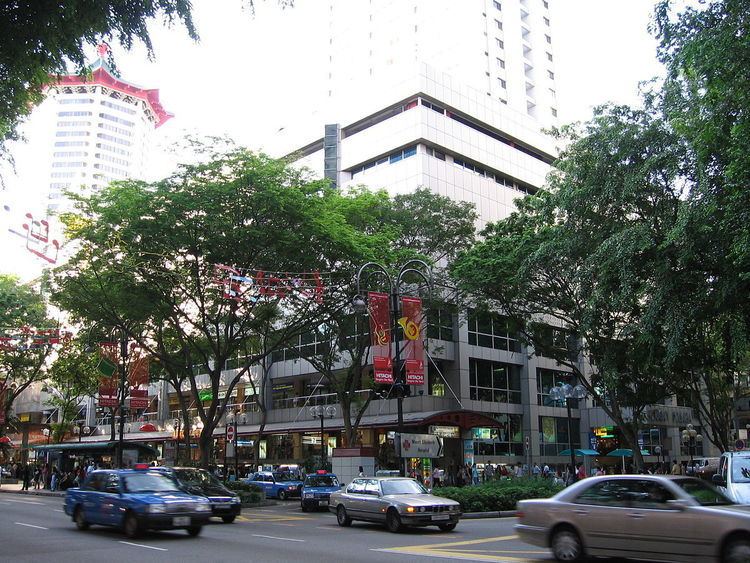Location Orchard, Singapore Website Lucky Plaza Phone +65 6235 3294 | Opening date 1981 Opened 1981 Completion date 1981 | |
 | ||
Hours Closed now Tuesday8AM–10PMWednesday8AM–10PMThursday8AM–10PMFriday8AM–10PMSaturday8AM–10PMSunday8AM–10PMMonday8AM–10PM Similar Far East Plaza, Wisma Atria, The Paragon - Singapore, ION Orchard, Ngee Ann City | ||
Lucky plaza budget barbie ep74
Lucky Plaza is a shopping centre located in Orchard in Singapore.
Contents
Built by developer Far East Organization, Lucky Plaza was completed in 1981 and has proven to be one of the more successful shopping centres in Singapore during its heyday.
Lucky plaza introduction
History
Before Lucky Plaza was built in 1978, Champion Motors stood at 304 Orchard Road. The move in of Champion Motors transformed Orchard Road into Singapore’s ‘Motor Row’, displaying branded automobiles along the streets, and introducing the first ever Volkswagen (known for its reliability and dependability) into Singapore. This form of brandishing signified the growing wealth in Singapore after the Second World War.
The 1960s heralded the explosive growth of the mass commercial aviation, facilitating the in-flow of tourists across the world. This helped the State to identify the tourist market as having a massive growth potential – boost income, job and trade opportunities, and in 1963, the former Minister for Culture S. Rajaratnam, announced the plans to develop the tourism as a major industry in Singapore. Thus, the newly-formed STPB was appointed to carry out this massive plan. However, the private sector faced the challenge of limited resources to promote Singapore abroad as a tourist destination. This led to the State’s effort to increase its funding for the development of the tourism industry in Singapore. One of the first places to be developed was the area of Orchard Road, where many hotels were erected. Therefore, beginning in the 1960s, Orchard Road began to undergo massive transformation, and the area was zoned for retail. By the early 1970s, Orchard Road had already attained its status as the ‘IN’ shopping area and gained an international recognition as a shopping paradise in Singapore.
Following the developments along Orchard Road, however, property values within this prime area began to grow, and motor traders were ‘forced’ to ‘evacuate’. By the late 1970s, many brands, including Volkswagen, shifted to Leng Kee Road and Alexandra Road, transforming the area into Singapore’s new ‘Motor Road’.
The ‘exodus’ of the motor traders brought in the land developers. During the 60s and 70s, North Bridge Road and High Street were known as the prime dinning and shopping areas in Singapore, accommodating many well-known retail stalwarts, e.g. Metro, Takral and Majeed Textiles. On the other hand, at that time, Orchard Road was ‘a leafy street lined with double-story shop houses’. Mr Ng Teng Fong, the founder of Far East Organization, foresaw the shifting taste for better shopping and dining choice and envisioned the need for a ‘vibrant main shopping street’ in Singapore. Thus, Far East Organization became the first to venture into the development of Orchard Road, starting off with Far East Shopping Centre in 1974, followed by Lucky Plaza in 1978.
In 1978, many expected the 736 strata units and 30-storey commercial cum residential building (Lucky Plaza) to become a ‘white elephant’, despite that it was then one of the most expensive and largest development undertaken by a private developer. Little did they expect that Lucky Plaza would turn into a huge success in 1978, drawing in waves of eager shoppers, mostly wealthy local shoppers who lived in Tanglin and Cairnhill areas, and Malaysians and Indonesians. Lucky Plaza, designed by BEP Akitek Pte Ltd, pioneered the concept of a modern shopping mall – e.g. open vertical ‘bazaar’ as; the first multi-storey, fully air-conditioned shopping centre in the world; first golden bubble lift in South East Asia; well-designed positions of voids, foyers and concourses throughout the Plaza; wide corridors along shopping arcade; wide glass panels on both fronts of the shop for attractive display of goods. Such features won Lucky Plaza a mention in the National Geographic magazine. Furthermore, in the early years of its launch, small-scale businesses and individual shops selling luxury products such as jewellery, antiques, handicrafts and branded watches occupied the storefronts of Lucky Plaza.
Architecture
Lucky Plaza's success was due as much to the architect's — BEP Akitek Pte Ltd — concept of an open vertical 'bazaar' as to its central position in the middle of the Orchard Road tourist district.
The high value location prompted the idea of placing the traditional arcade 'on end' in the form of a series of stacked galleries, interconnected by escalators and glass lifts, around a high open space. These internal pedestrian streets are linked to those outside and a multi-storey carpark at the rear at several not too convenient points.
The building is set back from the main road and though this would appear to give more space for vehicles and pedestrians, the conflict between people, cars and taxis is very evident.
Amenities
Lucky Plaza has a wide range of shops selling electronics, shoes and sports goods. The upper levels include bars, nightspots and doctor's premises.
There is a food court in the basement that sells cheap local fare. There are other food joints in the building, such as McDonald's, Pizza Hut and other eateries, including the main branch of an Ayam Penyet chain.
Shops that sell off-season perfume and cosmetics can be found on most floors.
Lucky Plaza also houses beauty salons on the fourth floor that attract foreign tourists and flight crew due to the lower costs compared to prices of salons in the rest of the shopping district.
